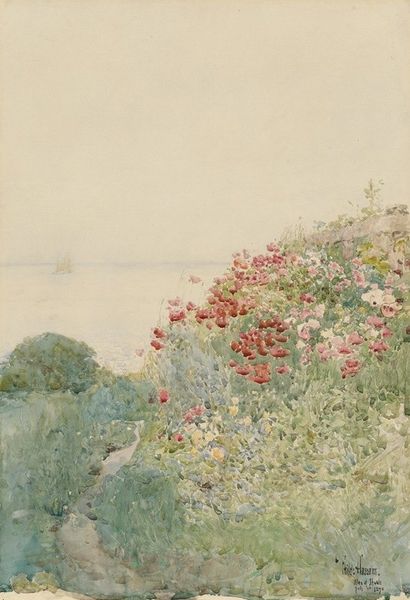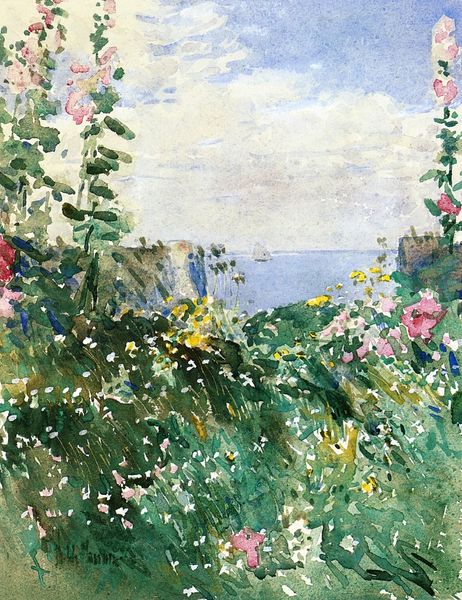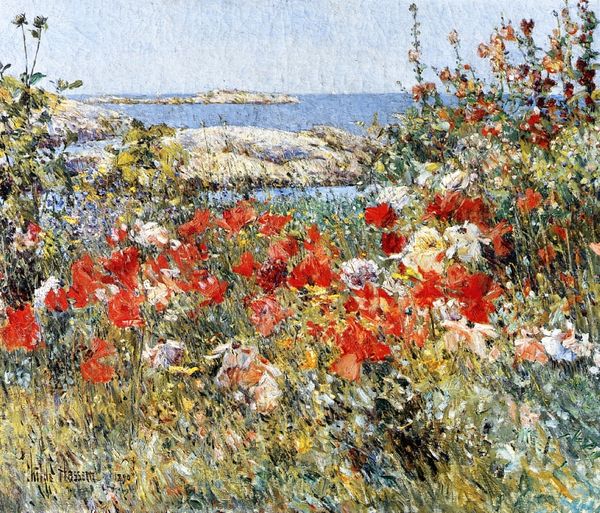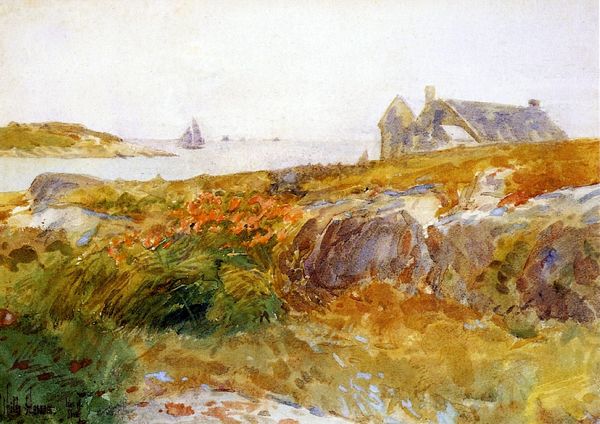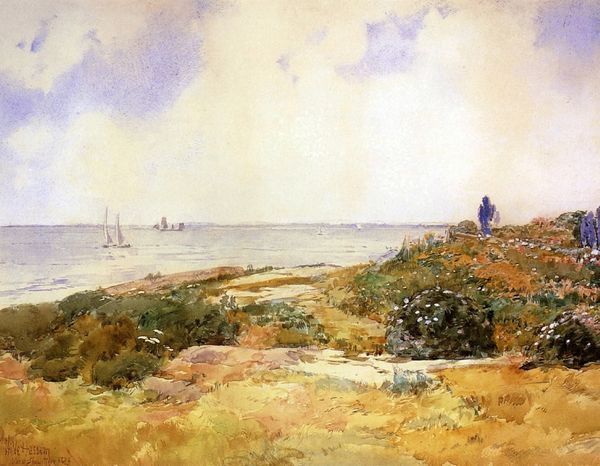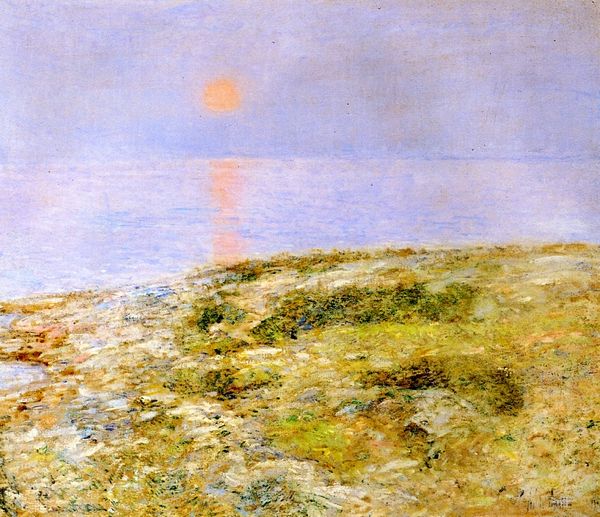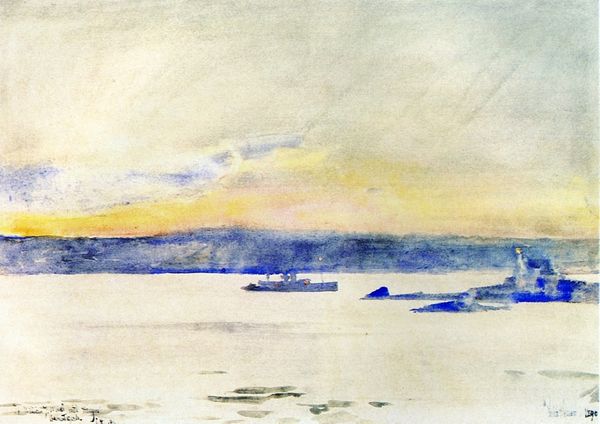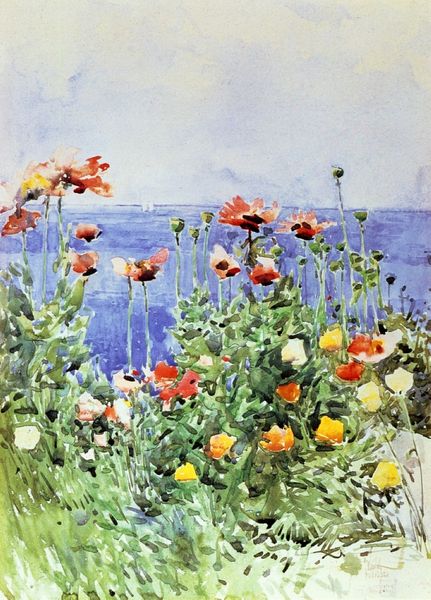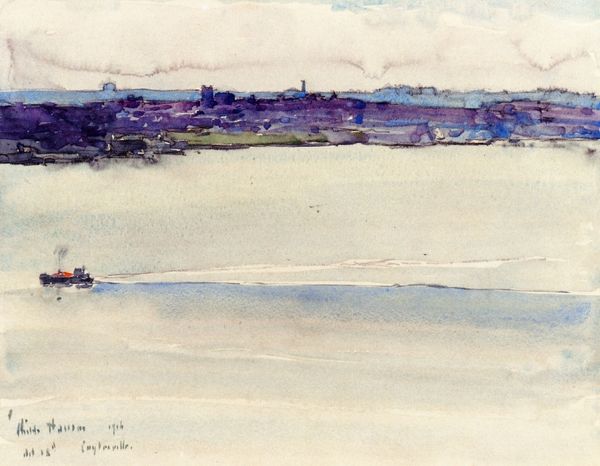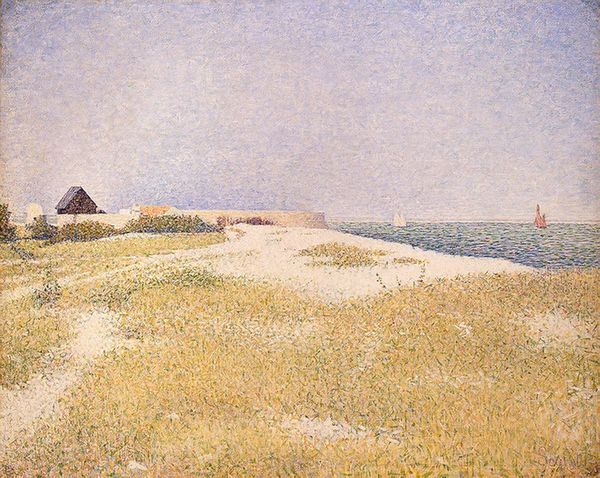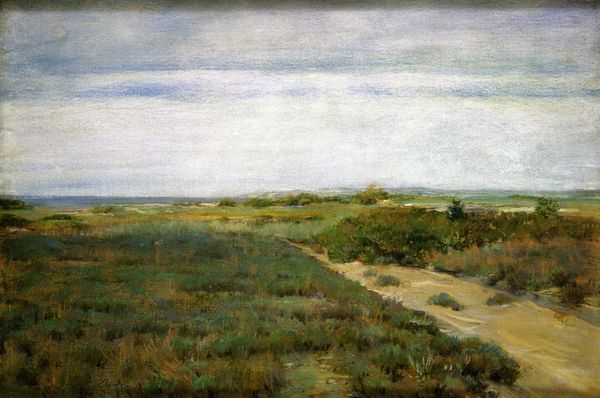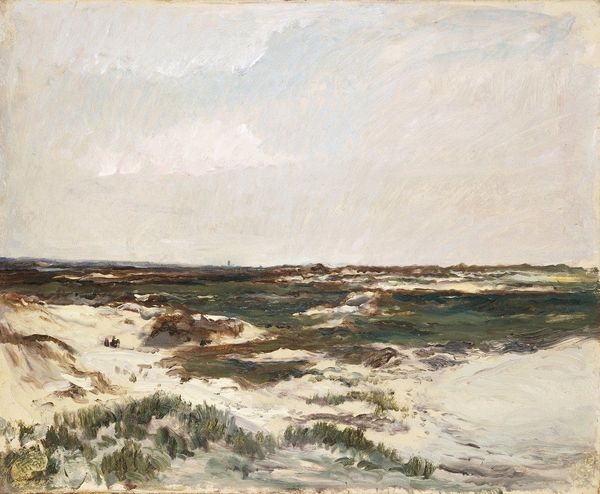
plein-air, watercolor
#
impressionism
#
grass
#
plein-air
#
landscape
#
watercolor
#
ocean
#
plant
#
watercolor
Copyright: Public domain
Editor: Here we have Childe Hassam's watercolor, "Isle of Shoals," painted in 1890. It's such a breezy piece, capturing the shore with such lightness. How do you interpret this work, looking at the pure formalism of the painting? Curator: Indeed. The immediate impression is one of deliberate construction, primarily achieved through the manipulation of color and form. Note how Hassam utilizes the watercolor medium to its fullest extent. The transparency of the paint allows the white of the paper to become an active element. Editor: I see what you mean. The white isn't just blank space; it's like… light. Curator: Precisely. Consider the composition: the foreground, dominated by detailed floral elements, contrasts with the subtly suggested ocean and sky in the background. This juxtaposition creates depth, but more importantly, a dynamic tension between the defined and the undefined. The diagonal sweep of the land further animates the visual field. What function do you see this dynamism achieving within the work? Editor: Hmm, I think it kind of leads my eye through the scene. I see the dark flowers, then I follow the land until I reach the ocean. Curator: That visual pathway, orchestrated through compositional elements, focuses our gaze. Hassam seems less interested in the realistic depiction of a landscape than he is in crafting an experience of seeing—in the very act of perception itself. Note, too, how these elements converge in such a visually balanced presentation of form. Editor: That makes the piece seem very modern. I mean, more focused on form than objective meaning. Thanks, that really shifts my perspective. Curator: Art resides, as it were, not only in the rendering but, profoundly, in our reception of its forms and structure. That understanding, for me, is very profound when analyzing works such as this.
Comments
No comments
Be the first to comment and join the conversation on the ultimate creative platform.

